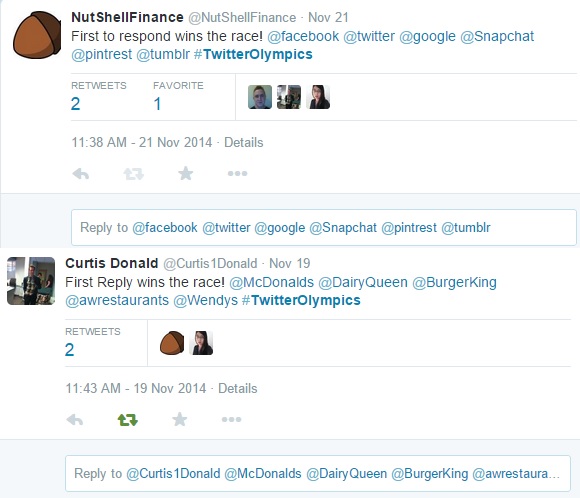From the Inside Out!

What’s the MOST important part of a business?
Profits?
Customers?
Sustainability for the long run to ensure a bright future for everyone?
Sure, all of the above…
But the employees are just as important!
Up till now we’ve talked a lot about energizing, engaging, and responding to the market, but we’ve neglected the poor employees! They’re part of the groundswell too!
Apart from being a huge portion of the company structure, employees are a natural pool of social connections with the same common goal as the business: Success.
As your company grows it becomes increasingly difficult for efficient internal communication. Employees will become tired on incessant emails, and information flowing down the corporate ladder flows easily, but communicating insights and ideas going up the ladder become more difficult.
How can we get employees to engage?
The same way we get the market to!…More or less.
Companies will be able to achieve this through internal social networking applications, collaborating wikis, and idea exchanges such as forums. These platforms all connect employees into the groundswell.
(Li & Bernoff, 2011)


Companies such as Best Buy and Razorfish have been able to integrate employee engagement through the groundswell.
Blue Shirt Nation was created by two Best Buy employees in order to gather insights on how well their advertising works.  With a community building software called Drupal, the marketing management was able to gain new insights from Blue Shirts (a nickname for employees based off the blue polo uniform), which was more honest and useful, as opposed to information collected through corporate visits.
With a community building software called Drupal, the marketing management was able to gain new insights from Blue Shirts (a nickname for employees based off the blue polo uniform), which was more honest and useful, as opposed to information collected through corporate visits.
The Blue Shirt Nation not only allowed management new insights to their employees, but also allowed employees to help each other.
(Li & Bernoff, 2011)
Razorfish is dubbed as “one of the largest interactive agencies in the world” (Li & Bernoff, 2011 pg 239 para 2). Razorfish’s internal website, their intranet is  set up as one giant wiki. Their internal site includes blogs, collaborative spaces, and is perfect for sharing ideas and insights.
set up as one giant wiki. Their internal site includes blogs, collaborative spaces, and is perfect for sharing ideas and insights.
Razorfish has connected its employees to the groundswell so well that it is in their corporate culture.
(Li & Bernoff, 2011)
References
Li, C., & Bernoff, J. (2011). Groundswell: Winning in a world transformed by social technologies. Harvard Business Press.
Images in order of appearance
TAIMUR. (n.d.). Business productivity – how to optimize it for your employees. Retrieved from Skylight website: http://skylightit.com/blog/
DutcgGorilla. (2012). Youwin.gif. Retrieved from Skylight website: http://imgur.com/gallery/0PoqQMo
Wikipedia. (2014). Best buy. Retrieved from Wikipedia website: http://en.wikipedia.org/wiki/Best_Buy
Coffee, P. (2014). Update: Layoffs at razorfish north america. Retrieved from AgencySpy website: http://www.mediabistro.com/agencyspy/we-hear-layoffs-at-razorfish-north-america_b67897
Bendt, S., & Koelling, G. (2008). Best practices in social networking: Best buy’s blue shirt nation. Retrieved from Business Innovation Factory website: http://www.businessinnovationfactory.com/blog/2008/9/best-practices-social-networking-best-buys-blue-shirt-nation#.VIJEd_nF9tM
Tealeshapcott. (2010). Collaboration intranets. Retrieved from tealeshapcott website: http://www.tealeshapcott.com/teale/wp-content/uploads/2010/10/Collaboration-intranets.png










 In general we found that the level of involvement seemed to coincide with their industry peers. If a company in an industry responded, it was very likely that most if not all companies mentioned would respond as well. While in other industries, companies that had not responded, their peers had not responded either.
In general we found that the level of involvement seemed to coincide with their industry peers. If a company in an industry responded, it was very likely that most if not all companies mentioned would respond as well. While in other industries, companies that had not responded, their peers had not responded either.





 questions without the use of Tellers, or call centers.
questions without the use of Tellers, or call centers. 



 king for out.
king for out. Freedom 55 founded as a division of London Life, has many advisers who could benefit greatly from an online presence, which could be achieved using the POST method.
Freedom 55 founded as a division of London Life, has many advisers who could benefit greatly from an online presence, which could be achieved using the POST method.

 is a date with disaster. Starting small and taking natural steps to the integration of a new strategy, and new way of thinking requires a steady implementation of small steps. This slow and steady process will also allow for an opportunity for the people of the organization to adjust to the changes.
is a date with disaster. Starting small and taking natural steps to the integration of a new strategy, and new way of thinking requires a steady implementation of small steps. This slow and steady process will also allow for an opportunity for the people of the organization to adjust to the changes. over the phone customer service as a staple of their organization. This gave Dell a competitive advantage over others. In 2001 Dell has outsourced it’s customer service offshore, lowering it’s customer satisfaction greatly by 2005 (Li & Bernoff, 2011).
over the phone customer service as a staple of their organization. This gave Dell a competitive advantage over others. In 2001 Dell has outsourced it’s customer service offshore, lowering it’s customer satisfaction greatly by 2005 (Li & Bernoff, 2011).



![[groundswell_ladder.jpg]](https://nutshellfinance.files.wordpress.com/2014/10/ed872-groundswell_ladder.jpg?w=379&h=440)

 (Alexa, 2014)
(Alexa, 2014)